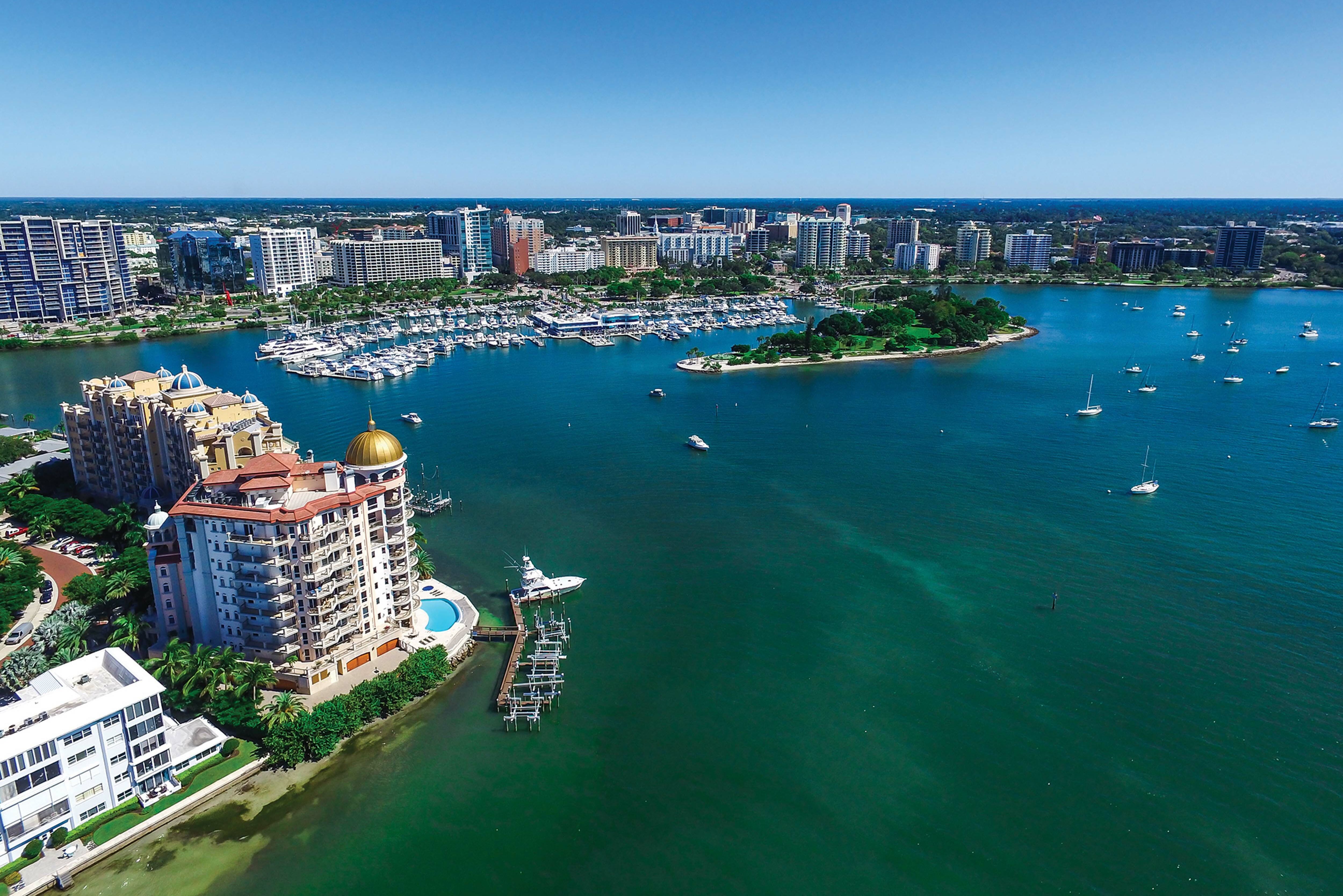The Biggest Local Environmental Stories of 2023

Image: Shutterstock Composite
Goldfish get a bad rap. For years, they’ve been the go-to insult for forgetful people because of their three-second memory. But that’s never been true. Goldfish (Carassius auratus) have the ability to remember things for years, which makes you wonder: Who are the real goldfish?
Maybe us.
While the month of December is a time of reflection and remembrance, it can be difficult at times to remember everything we went through in the previous 11 months, and we are often shocked at all that happened and all that we forgot. And perhaps no subject is more forgotten than our environment. It’s no longer a surprise when Sarasota makes national news for a significant catastrophe, and boy did we have ourselves a year in the spotlight, so let’s do some remembering.
The following are seven of the most consequential environmental stories of 2023, but, to be clear, this is not a doomsday list of disasters. We had environmental victories, as well. It's just that our victories require constant attention and effort. After all, we don’t get happily ever afters in this world. We must remember that when something goes wrong (or right!), its tremors ripple out for years. So as we look back, we must also look forward and stay in the fight. That means getting involved and becoming aware of what’s happening in Sarasota and supporting the people and organizations who work tirelessly to keep our land, water and air clean.
Need some more inspiration? Consider attending this week's EcoSummit and Green Living Expo, where speakers will discuss many of our area's most pressing environmental challenges, and offer solutions.
So, here we go: the seven biggest local environmental stories of 2023:
The Ongoing Piney Point Disaster
In March 2021, a leak in the Piney Point phosphorus mining retention reservoir ended up causing the release of more than 215 million gallons of nitrogen- and phosphorus-rich water into Tampa Bay. Then, this past April, the Florida Department of Environmental Protection constructed a deep well injection site and pumped the remaining wastewater into our aquifer. The discharge of nutrient-laden wastewater exacerbated a region already beset with harmful algal blooms. It will take years for us to truly know the consequences of this disaster.
The Manatee County Commission vs. Wetlands
In October, the Manatee County Commission voted to remove rules that protected wetlands from being developed and made it easier for developers to get construction permits. The vote handed the future of our area’s environment to our pro-development state officials, effectively giving up local control to the governor’s mansion. This means that wildlife and water quality will be negatively impacted, and the move may also increase flooding in neighborhoods that were protected by environmental buffer zones.
It didn’t matter to the majority of the commissioners that scores of their constituents showed up to protest the forfeiture of their rights. Commissioner Kevin Van Ostenbridge dismissed the opposition as political dissent funded by billionaire philanthropist George Soros. “It's become that clear we have radical climate activists who are pushing the Green New Deal and have brought a movement that is rooted in communism into Manatee County,” he said.
Unmitigated Growth
According to U.S. News & World Report, the Sarasota-Manatee area is the second fastest growing area in the country. With all these new people flooding our area, development is outpacing our ability to mitigate the effects of climate change. Parts of Sarasota’s stormwater system are more than 80 years old, and while the city made some progress toward flood mitigation when it raised the roundabouts along U.S. 41, it still lags behind in some major residential areas, and Sarasota County continues to develop in flood-prone regions.
One of the main themes of this year’s EcoSummit is the effect of population growth and the available programs we have to mitigate environmental impacts while development marches on.
Malaria Returns
This summer, Sarasota made international news when at least eight residents contracted malaria—the largest outbreak of the mosquito-born disease in decades. While the cause of the outbreak is still largely unknown, what we do know is that almost all of the cases were from mosquito bites in the wooded neighborhoods of DeSoto Acres.
Some scientists believe that malaria and other mosquito-born diseases could become a perennial issue in Florida and the rest of the nation because of increasing temperatures. Mosquitos thrive in warmer climates and will migrate to whichever conditions suit them.
The Heat Wave
While Sarasota’s surface water temperature didn’t break the 100 degree Fahrenheit mark like it did near the Florida Keys, we still suffered from record heat waves this summer, and it’s only going to get hotter.
The average temperature in July 2023 was 86.2 degrees—3 degrees higher than normal, making it the hottest July in recorded history. July’s average max temperature was 93.6 degrees, and it was also the second driest July in our history. In fact, we received 6 inches less rainfall than average.
Drought Conditions Continue
Speaking of rain, did you know that Sarasota has been in a decades-long drought? According to the the U.S. Drought Monitor and the National Weather Service, Sarasota, Manatee and Venice received just 22 inches of rain as of November—half what we normally receive. This qualifies as an “extreme” drought.
Not only does this make our temperatures hotter, but it could have dire consequences for our drinking water supply, which is particularly concerning as more people move to the region and consume more water. We may be forced to live with mandatory water conservation measures in our near future.
Wastewater Treatment Success
Not all is lost, however. The Bee Ridge Water Reclamation Facility that once dumped millions of gallons of wastewater into Sarasota Bay is being expanded into an Advanced Wastewater Treatment plant that will help us take significant steps toward cleaning our waters. Thanks to a 2019 federal lawsuit brought in part by the local environmental advocacy group Suncoast Waterkeeper, the faulty wastewater treatment facility was required to undergo significant upgrades and became the largest capital water treatment project that Sarasota County has ever undertaken. The county was required to set aside $210 million to fix the plant and it is expect to open by the end of 2025.



